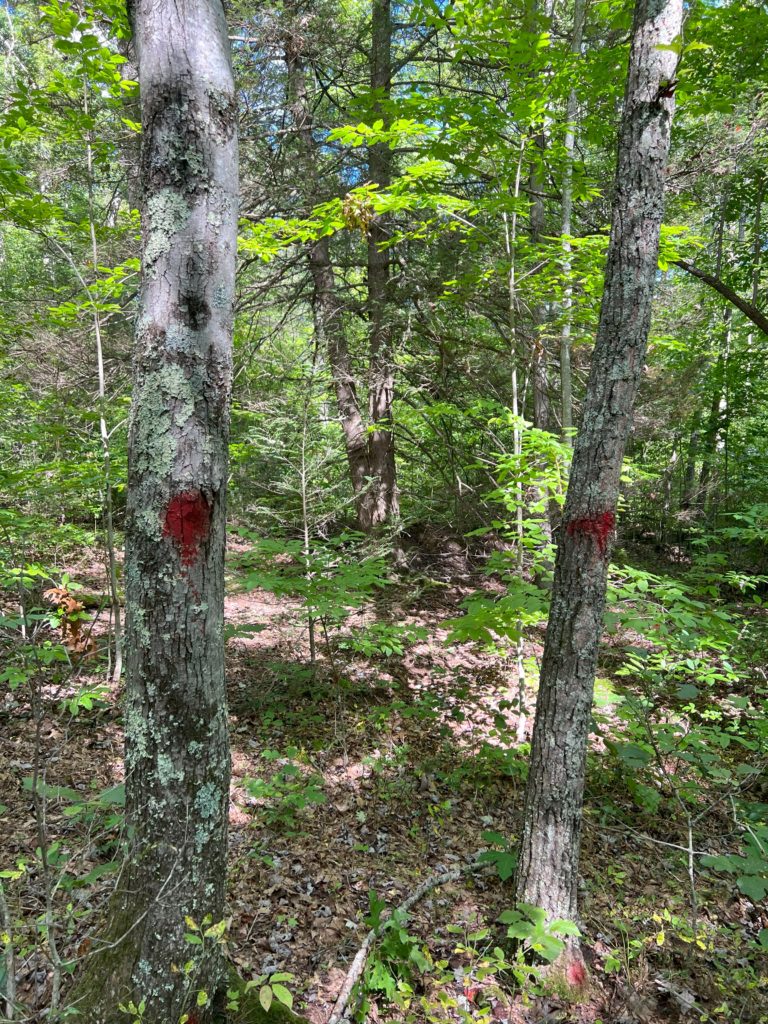Bird-Friendly Forestry in the Central Appalachian Mountains of West Virginia

Golden-winged Warbler male. Photo by Kyle Aldinger, NRCS.
Written by Dakota Wagner
Non-industrial landowners value their forests for many reasons. Common reasons include enjoying and protecting nature, providing a tangible asset for future generations, and generating income in the present. When landowners are asked about their forest management goals, most state that providing a place for wildlife and plants to live and thrive is more important than anything else (i.e., timber, recreation, legacy, etc.). Accordingly, foresters and other practitioners can successfully connect with landowners by using wildlife as an objective for forest management.

Retention trees marked at the Anew Climate demonstration site
Referencing wildlife, and more specifically birds, is a crucial starting point in discussing forest management with landowners because the presence of certain species often indicates quality habitat. Forests in Central Appalachia are home to many different species of birds with diverse habitat needs. Some species prefer mature forests with high structural diversity while others are more often found in younger, regenerating stands. Often, individual species may use different forest ages and structures depending on the stages of their breeding cycles. An unfragmented forest landscape with a diversity of habitats is likely flush with the sound of songbirds. Through watching the behavior of birds, both foresters and landowners can see the specific habitat features that forests provide. By encouraging those features, silviculture can make working forests better places for birds.
The Guild along with partners are implementing a program that will lay the foundation needed to sustain bird-friendly forestry throughout the Central Appalachian region by engaging with practitioners and private landowners. We recently published a bird-friendly forestry silviculture guidebook and corresponding management plan template to inform and guide foresters and land managers on bird-friendly forestry practices in the hardwood forests of the Central Appalachian Mountains. To inform landowners of bird-friendly forestry, our partners Wildlands Network and the Appalachian Mountains Joint Venture created a StoryMap that explores West Virginia from a “bird’s-eye view.”

A Bird’s-Eye View StoryMap by Wildlands Network.
This spring, we plan to host workshops for practitioners and landowners where they can learn about how to manage forests with birds in mind. These workshops will take place at bird-friendly forestry demonstration sites created by Anew Climate (formerly The Forestland Group) on May 2 and May 3.
We want to thank our partners from the American Bird Conservancy, Appalachian Mountains Joint Venture, Natural Resources Conservation Service (NRCS), West Virginia Division of Natural Resources, and Wildlands Network. This project is made possible through their support and collaboration, and funding from the National Fish and Wildlife Foundation, NRCS, Domtar Paper, and Packaging Corporation of America.
